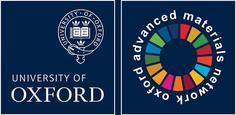The 'infinite-layer' compound1-3 AcuO2 (where A stands for cations such as strontium or calcium), has the simplest structure of all superconducting copper oxides, with only bare cations separating the CuO2 planes. Accordingly, an understanding of the doping mechanism(s) that lead to superconductivity in this compound may facilitate the elucidation of the same phenomenon in the other copper oxide superconductors. Recently, Azuma and co-workers2,4 observed planar defects in an infinite-layer phase synthesized at high oxygen pressure, and proposed that the defects are A-cation deficient, and lead to superconductivity (with transition temperature T c≈ 100-110 K) in this compound. Here, based on quantitative X-ray and high-resolution electron-microscopic analysis of the planar defects in (Sr, Ca)CuO2, we propose that the defects consist of a corrugated Sr-O layer substituted for a CuO2 layer, with the incorporation of apical oxygen atoms (which are absent in the parent structure) at roughly half the available sites in the neighbouring Sr layers. This is equivalent to an insertion of a Sr3O2 ± x block in an otherwise infinite-layer sequence. The variable oxygen stoichiometry of our defect model can account for the occurrence of p-type superconductivity (following high-pressure oxygenation), n-type superconductivity (high-pressure reduction) or lack of superconductivity (high-pressure neutral-atmosphere annealing) in this system, depending on the synthesis conditions4. © 1994 Nature Publishing Group.
Materials by design for sustainable solutions in the energy, medical, transport, and engineering sectors




